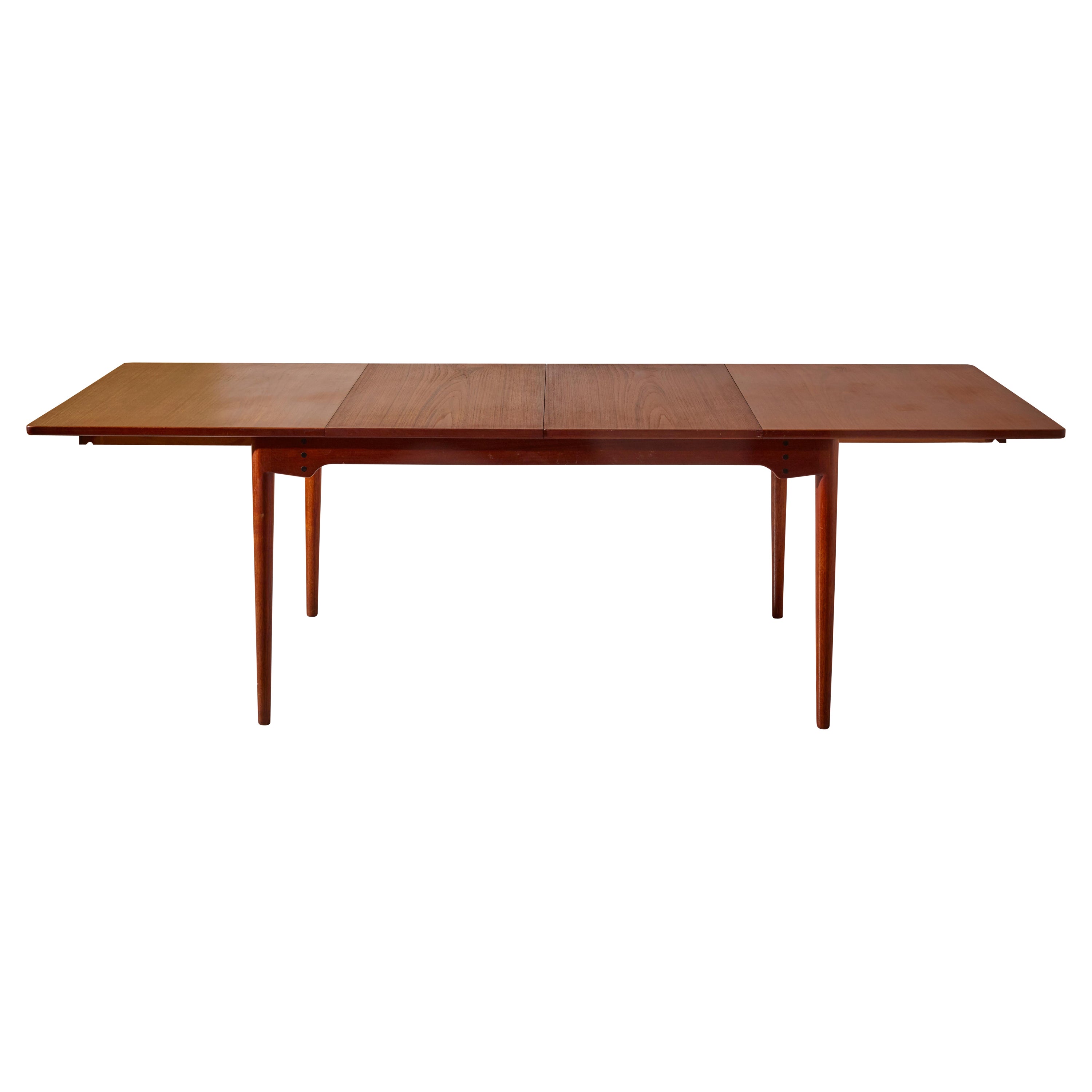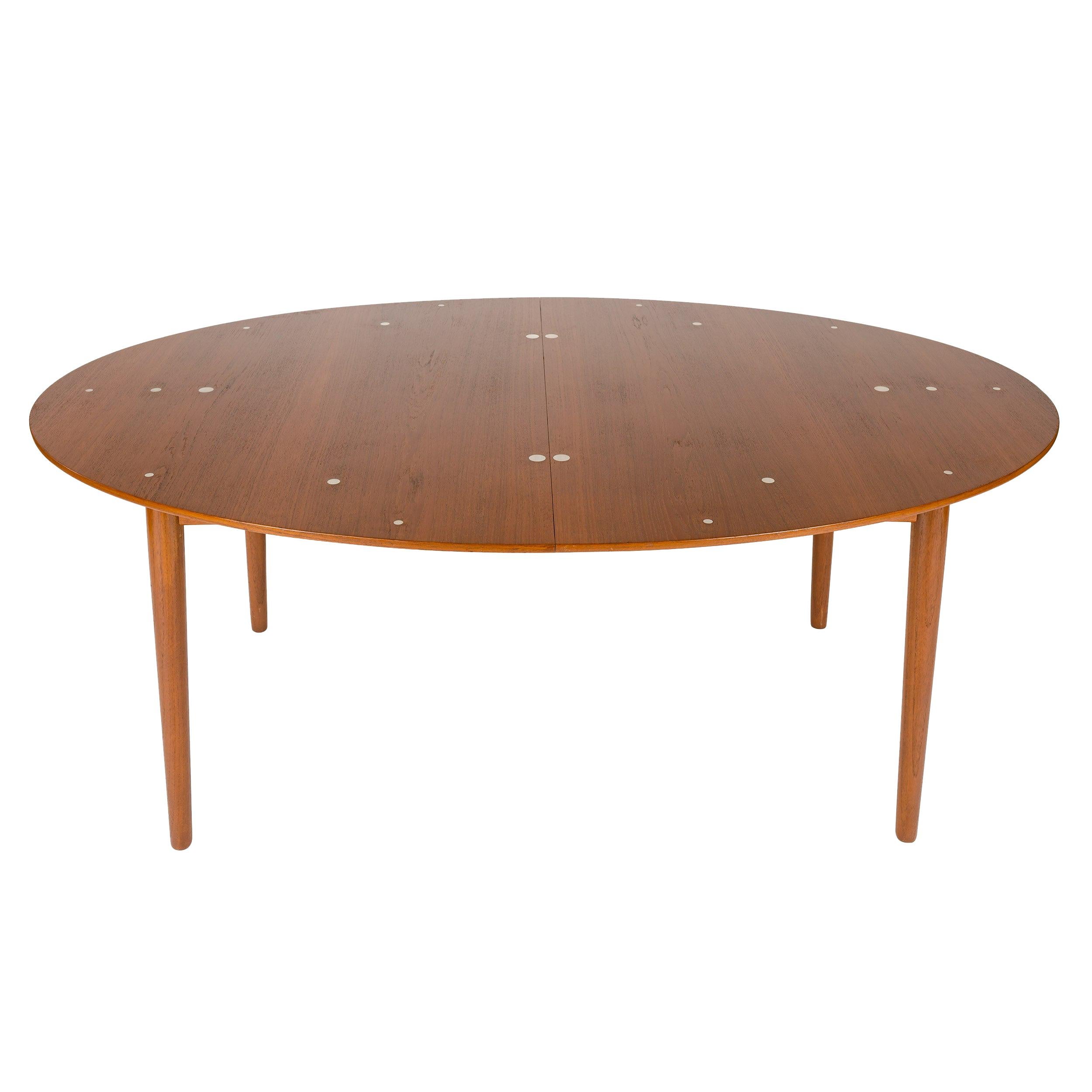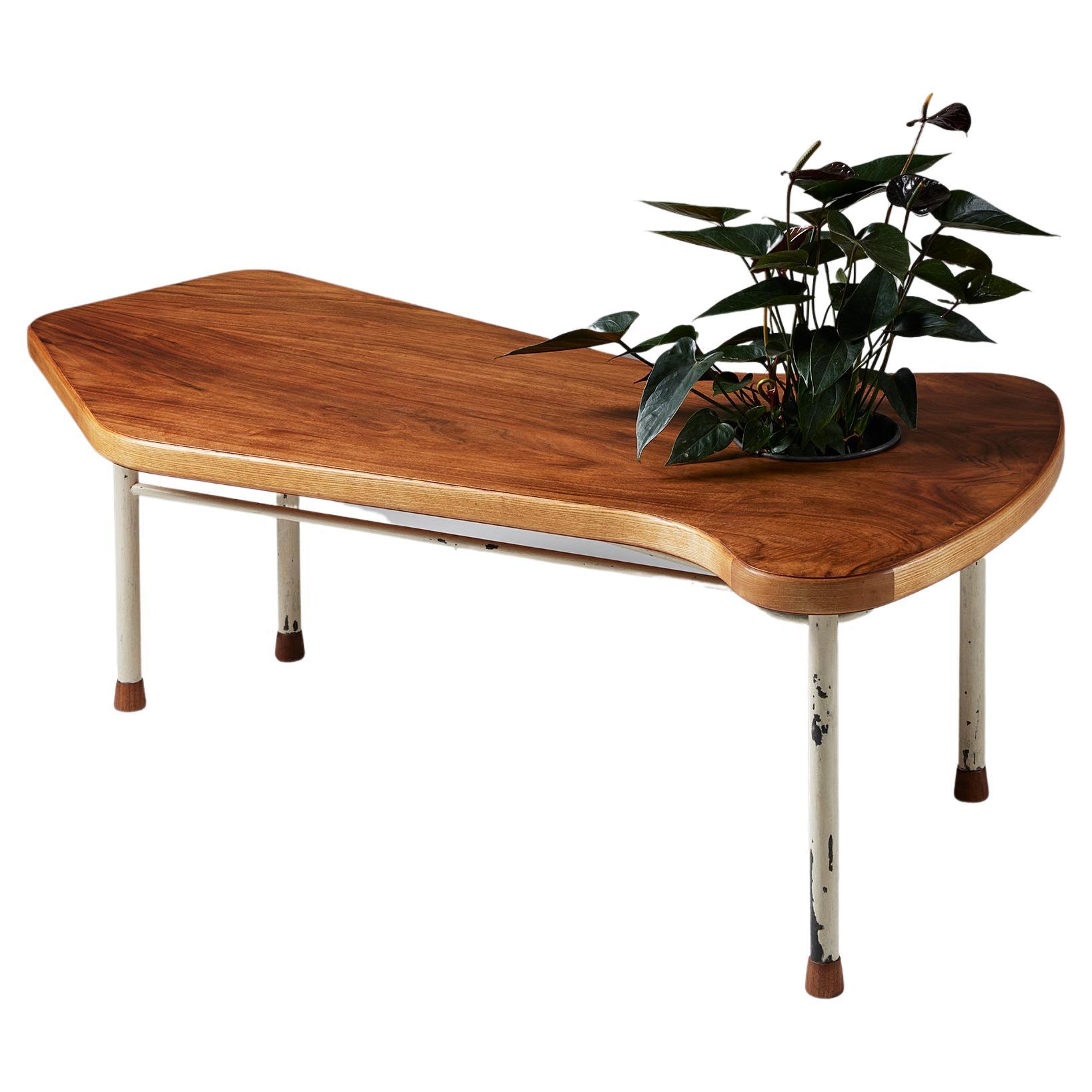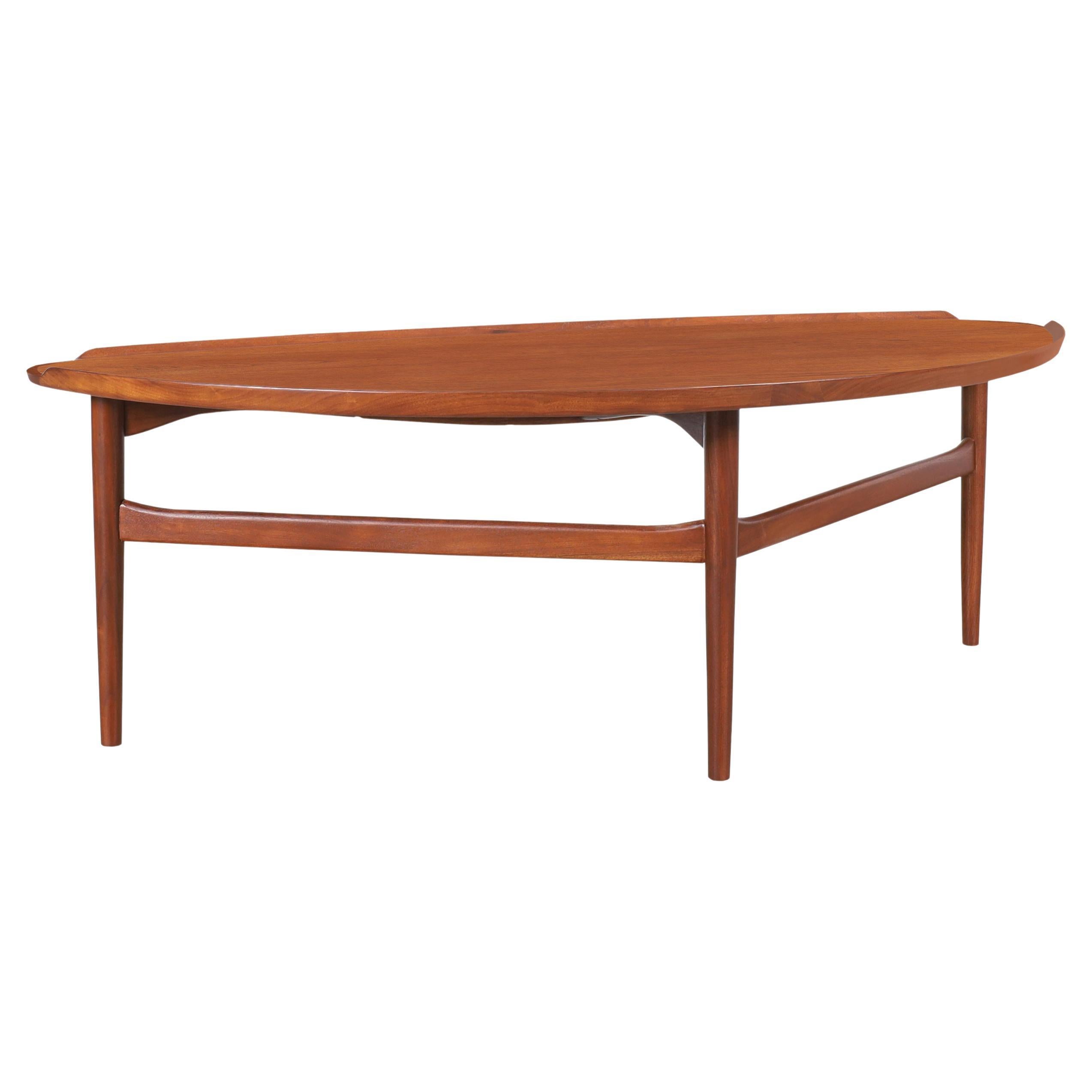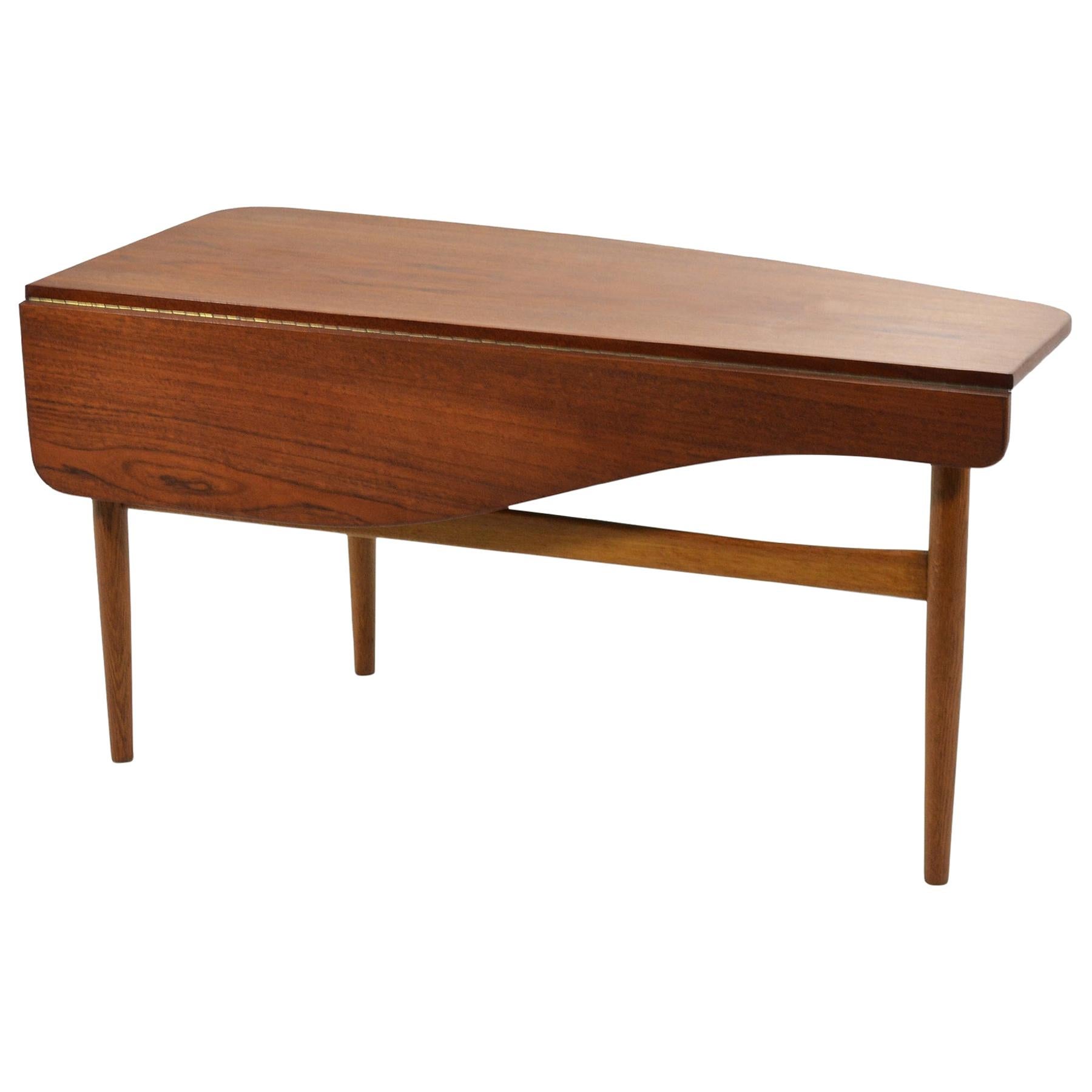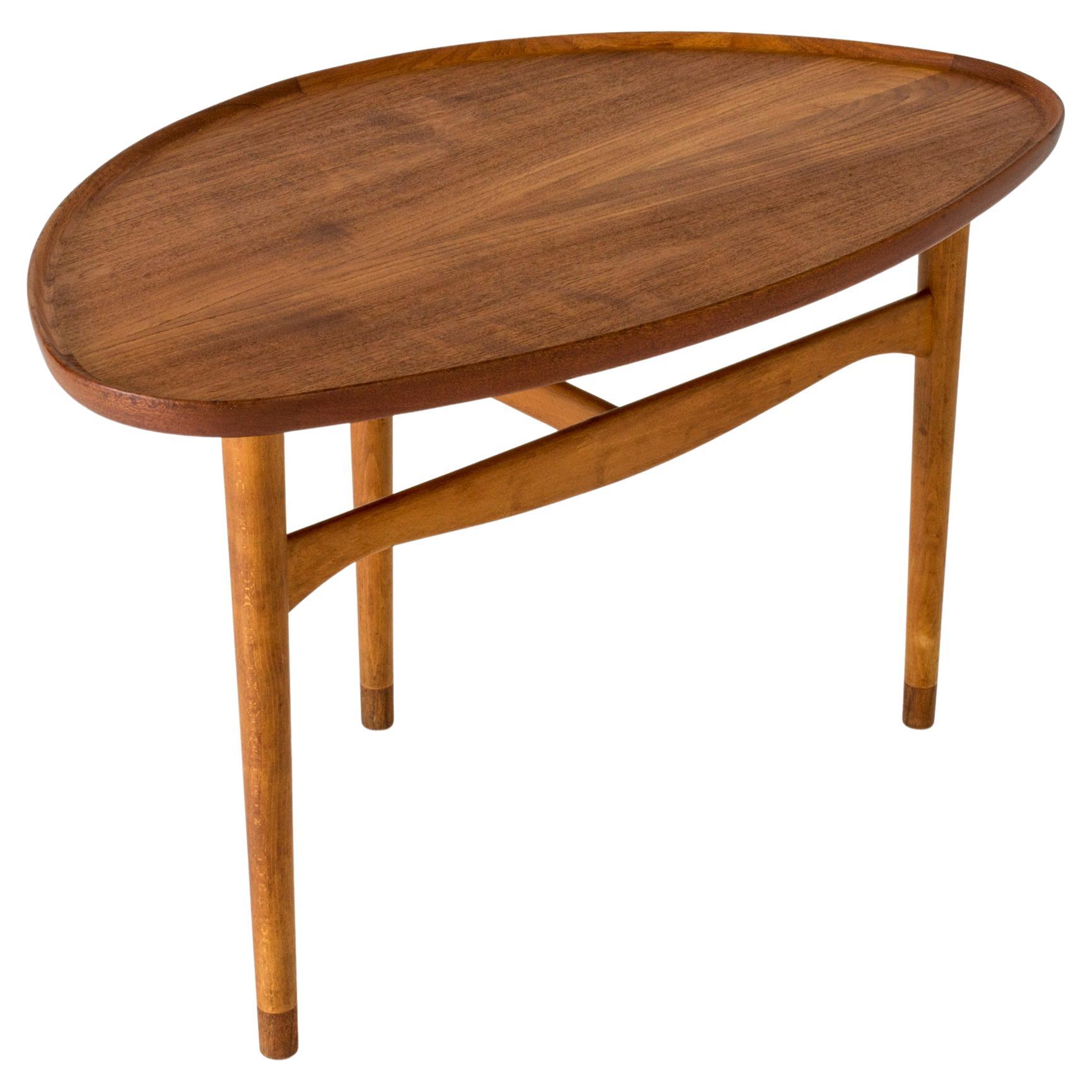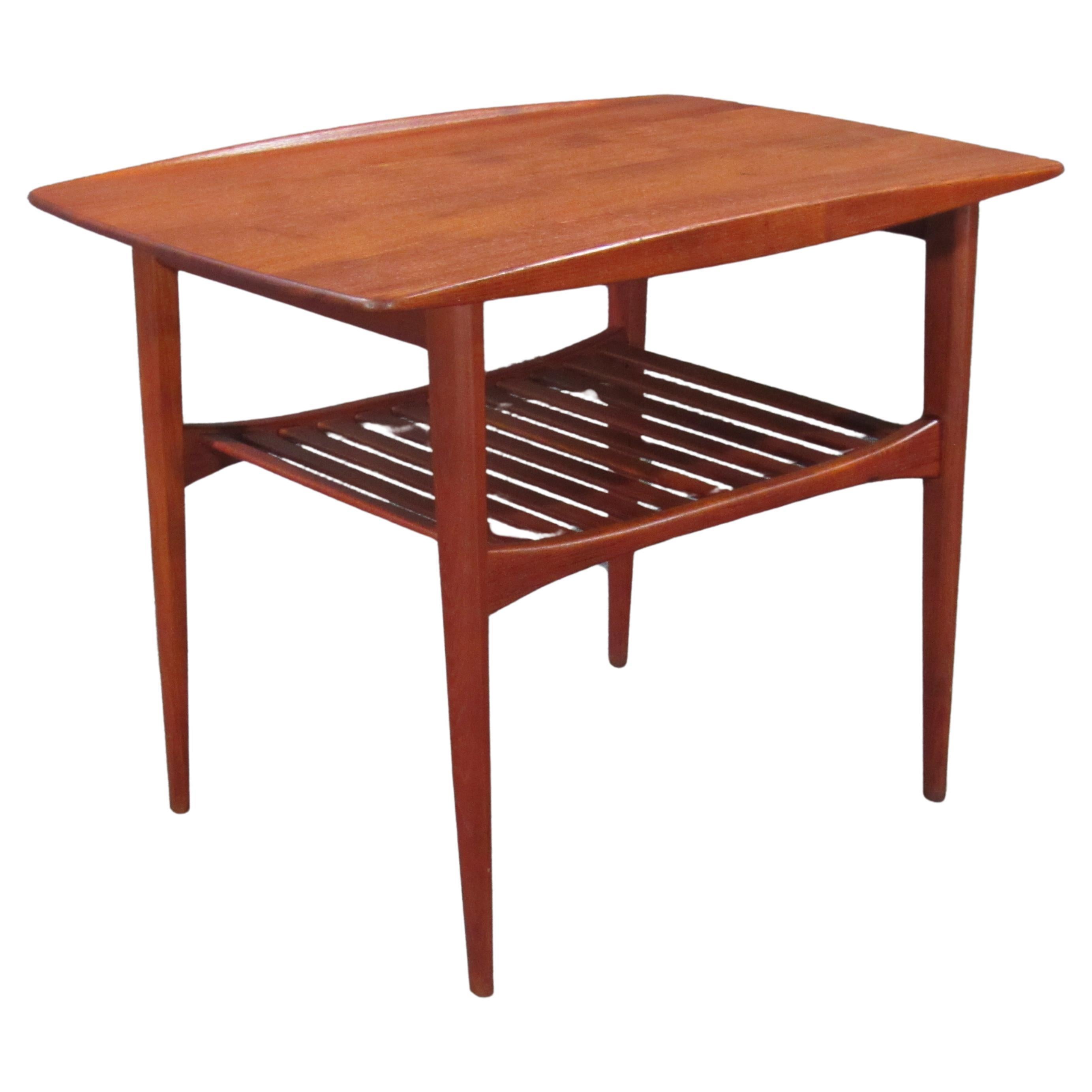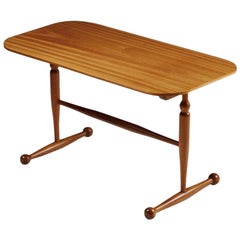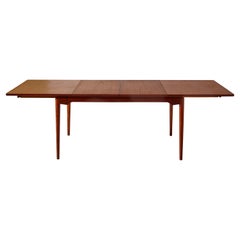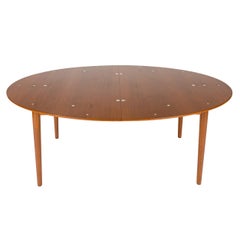
Occasional Table Designed by Finn Juhl for Bovirke, Denmark, 1950s
View Similar Items
Occasional Table Designed by Finn Juhl for Bovirke, Denmark, 1950s
About the Item
- Creator:Finn Juhl (Designer)
- Dimensions:Height: 21.26 in (54 cm)Width: 49.22 in (125 cm)Depth: 21.26 in (54 cm)
- Style:Scandinavian Modern (Of the Period)
- Materials and Techniques:Beech,Teak
- Place of Origin:Denmark
- Period:1950-1959
- Date of Manufacture:1950s
- Condition:
- Seller Location:Stockholm, SE
- Reference Number:1stDibs: LU1006617740791
Finn Juhl
Along with Hans Wegner, Arne Jacobsen and Børge Mogensen, Finn Juhl was one of the great masters of mid-20th-century Danish design. Juhl was the first among that group to have his work promoted overseas, bringing the character of the nation’s furnishings — and the inherent principles of grace, craftsmanship and utility on which they were based — to an international audience. A stylistic maverick, Juhl embraced expressive, free-flowing shapes in chair and sofa designs much earlier than his colleagues, yet even his quietest pieces incorporate supple, curving forms that are at once elegant and ergonomic.
As a young man, Juhl hoped to become an art historian, but his father steered him into a more practical course of study in architecture. He began designing furniture in the late 1930s, a discipline in which, despite his education, Juhl was self-taught, and quite proud of the fact. His earliest works, designed in the late 1930s, are perhaps his most idiosyncratic. The influence of contemporary art is clear in Juhl's 1939 Pelican chair: an almost Surrealist take on the classic wing chair. Critics reviled the piece, however; one said it looked like a "tired walrus." Juhl had tempered his creativity by 1945, when the Danish furniture-making firm Niels Vodder began to issue his designs. Yet his now-classic NV 45 armchair still demonstrates panache, with a seat that floats above the chair’s teak frame.
Juhl first exhibited his work in the United States in 1950, championed by Edgar Kaufmann Jr., an influential design critic and scion of America’s most prominent family of modern architecture and design patrons. (Kaufmann’s father commissioned Frank Lloyd Wright’s design of the house “Fallingwater.”) Juhl quickly won a following for such signature designs as the supremely comfortable Chieftan lounge chair, the biomorphic Baker sofa, and the Judas table, a piece ornamented with stylish inlaid silver plaquettes.
As you will see from the offerings on 1stDibs, Finn Juhl’s furniture — as well as his lighting, ceramics, tableware and accessories — has an air of relaxed sophistication and elegance that is unique in the realm of mid-20th-century design.
- Rare Coffee Table Designed by Finn Juhl for Niels Vodder, Denmark, 1941By Finn JuhlLocated in Stockholm, SECoffee table designed by Finn Juhl for Niels Vodder, Denmark, 1941. Walnut-veneered wood, ash, walnut, painted steel, and aluminium. Only two of these coffee tables with an integra...Category
Mid-20th Century Danish Mid-Century Modern Coffee and Cocktail Tables
MaterialsAluminum, Steel
- Sofa Bo64 Designed by Finn Juhl for Bovirke, Denmark, 1940sBy Finn JuhlLocated in Stockholm, SESofa BO64 designed by Finn Juhl for Bovirke, Denmark, 1940s. Savak wool upholstery and stained wooden legs. Provenance: Acquired by current owner at Bovir...Category
Mid-20th Century Danish Mid-Century Modern Sofas
MaterialsWool, Wood
- Occasional Table Designed by Josef Frank for Svenskt Tenn, Sweden, 1950sBy Josef FrankLocated in Stockholm, SEOccasional table designed by Josef Frank for Svenskt Tenn, Sweden. 1950s. Mahogany. H: 45 cm L: 80 cm D: 40 cm Josef Frank was a true European, he was also a pioneer of what would become classic 20th century Swedish design and the “Scandinavian Design Style”. Austrian- born Frank started his design career as an architect after having trained at the Technische Hochschule in Vienna between 1903 and 1910. After his training he went on to teach at Kunstgewerbeschule (The Viennese School of Arts and crafts) where he developed and espoused the new school of modernist thinking towards Architecture and Design that was coming to fruition in Vienna at the time. He also went on to lead the Vienna Werkbund throughout the 1920s. This was a truly progressive group of Architects and Designers who set about improving the daily lives of Austrian people through modernist design and architecture in partnership with Arts and Crafts ideals and construction. Frank’s leadership of the Werkbund had already cemented his place at the forefront of European design. Frank’s time in Vienna was typified by his design for the “Die Wohnung” exhibition of the Deutscher Werkbund in Stuttgart, 1927 where he exhibited along side his contemporaries at the forefront of design, such as the likes of Le Corbusier and Walter Gropius. Here he showed a specially designed pair of flat-roofed reinforced concrete houses in what is now seen as a typical modernist style. What separated Frank’s house from the other 32 houses of the exhibition was the interior and furniture inside the building. It was described as “Neo-Classical” and filled with an eclectic mix of period pieces, modern design and pieces designed by Frank himself that seemed to cross the two worlds. This was a complete opposite direction to that which his fellow Architects were travelling in with their pared back and angular aesthetics. Frank said of his own work: “The house is not a work of art, simply a place where one lives,” and by this reasoning Frank rejected the regimental mechanisation of the living space that his contemporaries believed in, instead he set about creating congenial and spontaneous interiors. Frank’s practice saw him placing the bright colours and the soft forms of nature back into the furnishings and interiors that he thought modernism sorely mist. Frank, along with Oskar Walch set up Haus und Garten in Vienna in 1925. This was Frank’s first commercial foray into furniture and home furnishings and the company went on to become the most influential furnishing house in Vienna with a riotous depth of colour and interesting shapes becoming the trademark of their design. However this success was to come to an end with rise of Nazism in Vienna in the early 1930’s. Frank was Jewish, and he and his wife Anna decided they would leave Vienna for her motherland: Sweden, in 1933. Frank continued to design for Haus and Garten, visiting Vienna occasionally and designing the pieces that would continue to be the company’s best...Category
Vintage 1950s Swedish Scandinavian Modern Tables
MaterialsMahogany
- Occasional table/ Bench model 5274, designed by Börge Mogensen, Denmark 1950sBy Børge MogensenLocated in Stockholm, SEOccasional table/ Bench model 5274, designed by Börge Mogensen for Fredericia Stolefabrik, Denmark. 1950s. Oak and cane. Measurements: W: 69 cm/ 27" D: 69 cm/ 27" H: 35 cm/ 13 3/4"Category
Vintage 1950s Danish Mid-Century Modern Tables
MaterialsCane, Oak
- Chair 'Egyptian' designed by Finn Juhl for Niels Vodder, Denmark, 1949By Finn JuhlLocated in Stockholm, SEChair “Egyptian” designed by Finn Juhl for Niels Vodder, Denmark, 1949. Made and stamped by the maker. Brazilian rosewood and leather. Measurements: H: ...Category
Mid-20th Century Danish Mid-Century Modern Chairs
MaterialsLeather, Rosewood
- Occasional Table, Anonymous for Oy Stockmann AB, Finland, 1950sLocated in Stockholm, SEOccasional table, anonymous for Oy Stockmann AB, Finland. 1950s. Elm. The most compelling aspect of this occasional table is the relationship of its legs to the surface. With splay...Category
Mid-20th Century Finnish Mid-Century Modern Tables
MaterialsElm
- Finn Juhl Model B065 teak extendable dining table for Bovirke, Denmark, 1950sBy Finn Juhl, BovirkeLocated in Chiavari, LiguriaA model BO65 extendable dining table designed by Finn Juhl and manufactured by the Danish cabinetmaker Bovirke. Created in 1952, this model features a sleek and minimalist aesthetic ...Category
Vintage 1950s Danish Mid-Century Modern Dining Room Tables
MaterialsTeak
- Finn Juhl Rare Desk for Bovirke in TeakBy Bovirke, Finn JuhlLocated in Waalwijk, NLFinn Juhl for Bovirke, desk, model ‘BO 69’, teak, metal, brass, Denmark, design ca. 1953, made late 1950s Finn Juhl conceived this rare version of the desk model ‘BO 69’ in the late...Category
Vintage 1950s Danish Scandinavian Modern Desks and Writing Tables
MaterialsMetal, Brass
- 1950s Scandinavian Modern Judas Dining Table by Finn Juhl for Niels VodderBy Finn Juhl, Niels VodderLocated in Sagaponack, NYA rare and superb solid wood Judas dining table by Finn Juhl. Manufactured by Niels Vodder, the table features an expandable oval top (...Category
Vintage 1950s Danish Scandinavian Modern Dining Room Tables
MaterialsSilver
- Danish Modern Teak Cocktail Table by Finn Juhl for BakerBy Finn Juhl, Baker Furniture CompanyLocated in North Hollywood, CAExceptional Danish modern teak cocktail table designed by iconic designer Finn Juhl for Baker Furniture in the United States, circa 1950s. This cocktail table has a sculptural design with no sharp corners that allow you to move freely around it. It has an entirely smooth crescent-shaped top, in which the fine grain of the wood projects...Category
Vintage 1950s American Mid-Century Modern Coffee and Cocktail Tables
MaterialsTeak
- Finn Juhl Coffee Table for Bovirke, 1948By Finn Juhl, BovirkeLocated in Copenhagen, DKFinn Juhl coffee table. Tabletop with raised edges and leg ends of teak, frame of oak. Designed by Finn Juhl 1948 and executed by Bovirke, Denmark. Fine condition.Category
Vintage 1940s Danish Scandinavian Modern Coffee and Cocktail Tables
MaterialsOak, Teak
- Finn Juhl Coffee Table with Drop-Leaf by BovirkeBy Finn Juhl, BovirkeLocated in Highland, INAn exceptional design by Danish master Finn Juhl for Bovirke, this coffee table designed in 1949 has three oak legs and a teak top with a free shape that pivots to support the drop l...Category
Vintage 1940s Danish Scandinavian Modern Coffee and Cocktail Tables
MaterialsTeak, Oak
